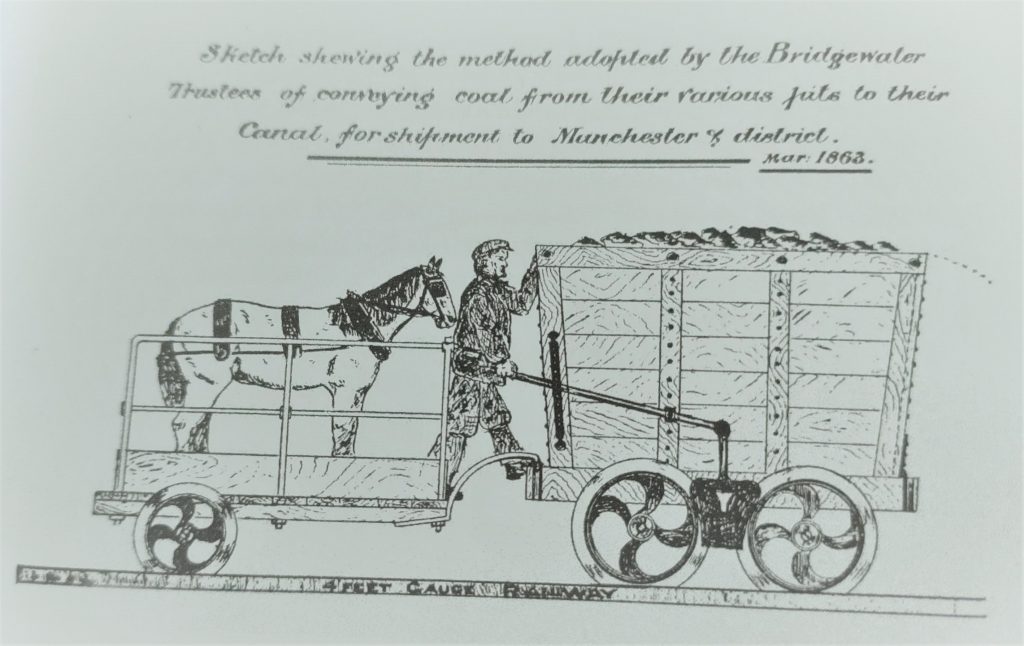In the 1830s as the Worsley Navigable LevelsExtensive network of underground canals that drained the Duke of Bridgewater's coal pits emerge into the open at the Delph in Worsley, Greater Manchester. became busier, the Bridgewater TrusteesCoal mining company on the Lancashire Coalfield with headquarters in Walkden near Manchester. built a tramway to link their pits north of Ellenbrook
Residential suburb of Worsley in the City of Salford in Greater Manchester, England. and at New ManchesterFormerly isolated mining community at the extreme eastern end of the Tyldesley township. with the Bridgewater Canal at Boothstown.[1]
As the underground levels were working at capacity, work on a mile-long, 4-foot gauge tramway from the Burgess Pits to the south of Hilton Lane to Boothsbank on the Bridgewater Canal started in 1833 and was completed in 1835.[2] The edge rails were laid on stone blocks. The Bridgewater accounts show that £125 was spent in 1833, £693 in 1834 and £719 the following year. The tramway had cast iron rails fastened onto stone sleepers with cast iron chairs.[3]
A branch from Mather’s Fold to the City and Gatley Pits in New Manchester, that were also connected to the underground levels, was made in the 1840s. The branch was extended to Madam’s Wood Pit in Little Hulton in about 1848. A branch from the Madam’s Wood line was built to serve the new Ellenbrook Colliery in the 1860s.[a]Ellenbrook Colliery was the forerunner of the Mosley Common Colliery[4]
A slightly longer tramway between Linnyshaw Colliery and Worsley canal basin was then built. The tramways were replaced by standard gauge railways in the 1870s and became part of an extensive private railway system based on Walkden Yard.[5]
Single coal wagons, with a driver who controlled the brakes, and a dandy cart or dolly for a horse, moved coal to Boothsbank by gravity using the slope of the land. Several “pass-bys”[b]Passing loops were constructed to keep the traffic on the tramway moving. The wagons were then hauled uphill by horses.[3] The individually braked wagons were in use into the 1870s.[5] A signal to warn road users to give way to the wagons was installed at Mather Fold, where the tramway crossed Newearth Road in the 1860s.

